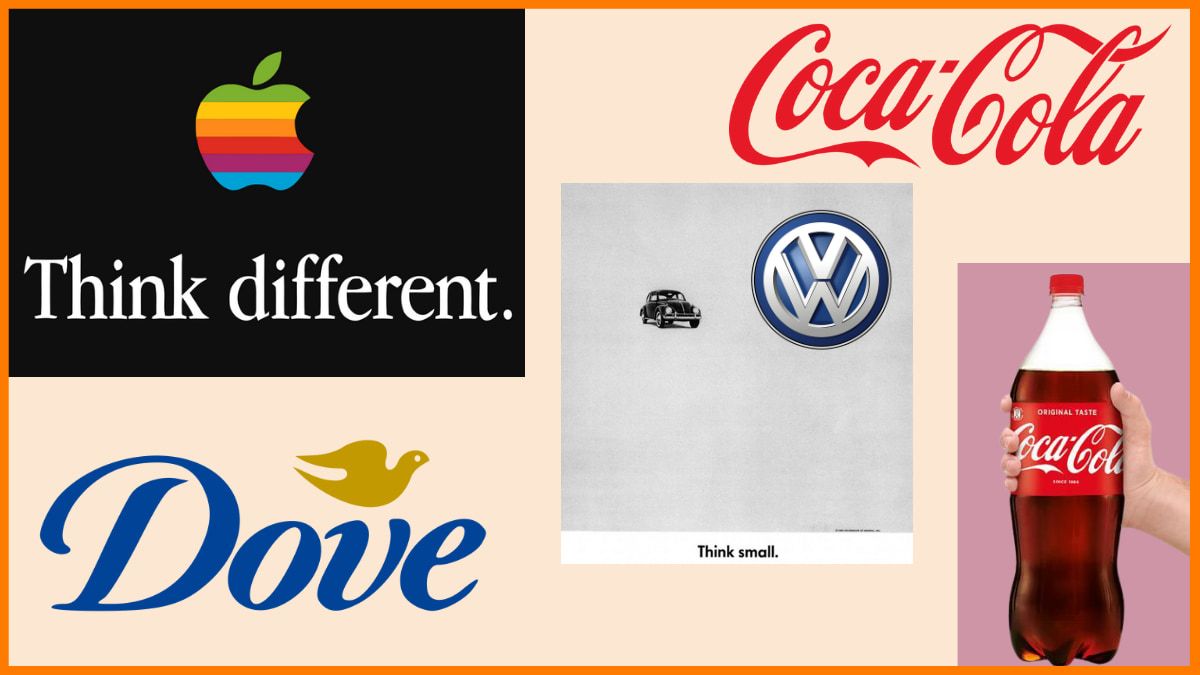Dove’s Real Beauty Campaign | A Success or a Failure?
🔍Insights
We have all been there, where our insecurity eats us alive, right? People make comments about other people's bodies for being obese, skinny, pretty, hairy, and other body-shaming comments without any hesitation or regret. It is at this point that we begin to take strangers' opinions personally, leading to feelings of insecurity or doubt in ourselves. In the world of being ourselves, both men and women encounter a lot of criticism.' True beauty is inside,' as the saying goes, but we don't take that to heart and continue to undervalue other people's lifestyles; if we don't accept ourselves, then who will?
That's why Dove launched the 'Real Beauty Campaign,' an evolving campaign aimed at boosting self-confidence among women and children. The Dove, in collaboration with Ogilvy & Mather, Edelman Public Relations, and Harbinger Communications, launched a global marketing campaign in 2004. Dove's Real Beauty Campaign was developed throughout a three-year creative strategic research project that identified a need for a new consumer-centric rather than product-centric advertising strategy. Notably, the campaign was developed to persuade women that they are all beautiful in their skin and that this is what true beauty looks like.
- 2004 - Beyond Compare: Women Photographers on Real Beauty Campaign
- 2006 - Beauty Crackdown Campaign
- 2013 - Real Beauty Sketches Ad
Dove’s Real Beauty Campaign, a Success or a Failure?
Public Reactions Towards Dove's Real Beauty Campaign
Pros and Cons of Dove's Real Beauty Campaign

Dove's Real Beauty Campaigns
In 2004, the Dove Real Beauty Campaign commenced, intending to celebrate women's individuality in terms of physical and emotional beauty. According to a survey conducted by Fortune magazine, only approximately 2% of females were satisfied with their physical appearance. The remaining 98% are unhappy with their appearance and feel insecure about their bodies. People still lack confidence about their physical appearances in the present era. The idea of the campaign was 'beauty is not the absence of flaws, but the ability to embrace them and yet feel beautiful.' As a result, the Dove beauty campaign made positive feedback, whereby influenced a lot of consumers and impacted positive brand association.
2004 - Beyond Compare: Women Photographers on Real Beauty Campaign
"Beyond Compare: Women Photographers On Real Beauty", a Dove and Ogilvy & Mather show, featured 67 female photographers of all races, colours, and body types, including slim, large, and tanned. The goal of this campaign was to instil a sense of acceptance towards differences among women. This campaign was the beginning of a revolution in the world of beauty. As a result, reactions to "Beyond Compare: Women Photographers on Real Beauty" have been varied, as it is rumoured that the commercial might be framed and scripted.
2006 - Beauty Crackdown Campaign
In 2006, Ogilvy & Mather wanted to expand the campaign by producing one or more viral videos for the Campaign for a Real Beauty website. The campaign was an interview-style work meant to highlight how mothers and daughters interacted with difficulties surrounding current perceptions of beauty and the beauty business. Daughter is a film that explores the challenges of self-esteem that many young girls face today. The Dove self-esteem fund backs up its campaign with data showing how people are more likely to have warped notions of beauty. A series of short videos called "Beauty Crackdown" was offered to Unilever as an "activation idea" during the creation of 'Daughters'. It was originally designed to drive traffic to the Campaign for Real Beauty website, where they could see 'Daughters' and participate in workshops. Onslaught and Amy were created by Ogilvy after Evolution. Onslaught is a moving video about the harsh realities of young girls and the impact the beauty business can have on them.

2013 - Real Beauty Sketches Ad
Hugo Veiga developed a video for the campaign called Dove Real Beauty Sketches, a self-esteem and body confidence campaign which was published in April 2013. It went viral, eliciting strong public and media reactions. Several ladies explain themselves to a forensic sketch artist who is unable to see his subjects on the video. The same women are described by strangers who encountered them the day before. When the sketches are compared, the stranger's image is always more flattering and correct. When women are shown the differences, they have significant reactions. Dove and the World Association of Girl Guides and Girl Scouts launched Free Being Me in October 2013, to improve "self-esteem and physical confidence" among girls.
Dove’s Real Beauty Campaign, a Success or a Failure?

As we all know, Victoria's Secret, one of the most well-known lingerie and cosmetics brands, has been embroiled in a long-running controversy over portraying their models as skinny and fair angels on a runway plus via an advertisement that to increase geared to be extremely thin with the slogan "the perfect body," which sparked outrage on various social media. To prevent such a backlash while launching a global marketing campaign, Dove opted to launch its evolution one, the 'Real Beauty campaign,' which elicited a mix of positive and negative comments from the public. The marketing effort undertaken by Dove earned two Cannes Lions Grand Prix honours and challenged personal care industries as a result.
The campaign featured women sharing their viewpoints on Dove products with the phrase "No wonder our perception of beauty is distorted" and encouraging women to love their real selves.
Dove's Real Beauty Campaign, in particular, had a major impact on brand image, resulting in increased sales and revenue while outperforming its competitors among both male and female consumers of other competitive brands. As a result, Dove's Real Beauty Campaign became one of the most effective promotional messages in terms of influencing consumer emotions and creating favourable brand associations.
Furthermore, the campaign became international recognition, which made a positive result in international markets, especially in Australia and New Zealand.
The Failure of Dove's 'Real Body' Bottle Shape Campaign

There is no doubt in the fact that Dove's Real Beauty campaign touched people's hearts. But the brand's campaign has also faced backlashes for its extra innovative ideas. In 2017, Dove decided to take a step forward with its real beauty campaign and added the idea to the packaging of its body wash bottles. It created the product bottles in different shapes representing different body types. The main idea behind this was to accept and celebrate different body types.
However, it received a negative reaction as people found the bottles' comparison with the body types a critical and unsympathetic move by the brand. The brand's intention was to promote body positivity whereas the bottles made women more conscious of their body types. This way, the idea to introduce differently shaped body wash bottles for the real beauty campaign flipped and received a massive backlash.

Public Reactions Towards Dove's Real Beauty Campaign
Individual adverts made by Dove earned different reactions from the audience. Whereby, People's self-confidence and self-love are developed as a positive approach. Furthermore, this real beauty campaign set an example of having a significant impact on society and generations, in terms of beauty standards.
The commercial, on the other hand, is claimed to be authentic, but critics claim that it was photoshopped to hide wrinkles, warts, stray hairs, and other imperfections. Furthermore, some sources claim that the corporation sells skin-lightening goods to dark-skinned persons in several countries, implying that the brand engages in discriminatory marketing and this campaign was established with a profit motive by enticing ladies and young girls to purchase their items.
Pros and Cons of Dove's Real Beauty Campaign
The following shows the pros and cons of Dove's Real Beauty Campaign:
Pros
- The Dove campaign is credited with starting a global discourse about expanding the concept of beauty. The foremost pro of the campaign is that it defies the unrealistic standards of beauty and promotes the idea of acceptance towards oneself.
- By questioning beauty stereotypes, Dove hoped to revolutionise the advertising culture. They chose women who defy conventional beauty standards. This presented a different perspective inside the media and real women appeared to be outstanding and pleasant to their female audience. The campaign's success may be seen in the massive amount of media coverage it has gotten.
- For Dove's campaign, media exposure has resulted in $150 million in free media time. Numerous accolades have been given to the campaign. Much of the campaign's success may be credited to the fact that it was the first digital campaign to direct participants to a supportive online community of over 200 million individuals globally, with over 26 million people partaking in the campaign.
- Dove has succeeded in redefining the process of shopping beauty stocks to one that is centred on expressing key ideas and interacting with others, rather than simply making consumers feel good about the firm.
Cons
- Dove is a Unilever brand and its association with other brands has brought various raised eyebrows toward its purpose.
- Axe is a Unilever brand, that promotes a message that is opposed to Dove's objective; their advertisements heavily push the slender ideal and sexualization of women. As a result, Unilever is perceived as hypocritical, and its link with Dove contributes to negative feelings against Dove's ad campaign and cognitive dissonance in customers. The campaign's relationship with brands like Axe is the most heinous aspect.
- Fair & Lovely, a popular Unilever brand aimed mostly at dark-skinned women that encouraged women to want "lighter skin." This contradicts Dove's purpose to be more inclusive of all women's beauty by creating products that attempt to make all women look alike.
- Dove's Real Beauty Sketches campaign gained a lot of appreciation on one hand but on another hand, it also received criticism. People were not happy with the fact that the ad only presented white, slim, and pretty-looking women, describing their appearances to the artist. So, in a way, the ad is depicting the same idea that it wants to defy.
As a result, Unilever is perceived as hypocritical, and their link with Dove could contribute to negative feelings against Dove's ad campaign and cognitive dissonance in customers. Dove's dedication to its social objective may be questioned by consumers.
Conclusion
Nearly ten years after its inception, the Dove Campaign for Real Beauty is still going strong. One explanation could be that, despite the criticisms, the campaign can still be considered a positive step forward. The video's release sparked a lot of debate, both positive and bad, over the message it carried. If Dove's purpose was to start a global discussion on female body image, it succeeded admirably. Dove ran a fascinating social experiment to see how women perceive their beauty in comparison to what others think. Their goal was to look at the campaign from several perspectives and to entice customers to participate. The message is simple: "You are more beautiful than you believe."
FAQs
Was the Dove Real Beauty campaign successful?
Dove's Real Beauty Campaign is full of emotions and it broke all the conventional standards of beauty. This made the brand develop a strong connection with the audience. Thus, the campaign that was launched in 2004, is still considered one of the most successful ad campaigns ever.
Who is Dove's target audience?
Dove mainly targets women between the age group of 18 to 35 years, the age group that prefers to have beauty products for naturally healthy skin.
Is Dove cruelty-free?
Yes, Dove is cruelty-free as accredited by PETA, the animal rights organization.






